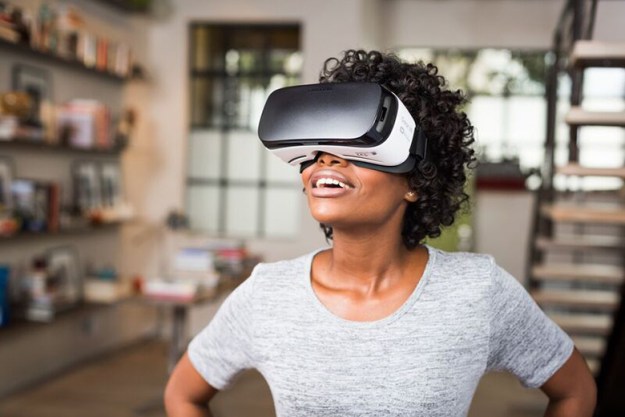I’m homeless, on a bus from Palo Alto to San Jose, California. It’s late at night, and a man sitting a few rows behind me is staring in my direction. He’s creeping me out, and he’s moving gradually closer all the time. While this is going on, another person on the bus is trying to maneuver away my backpack with their foot. If I keep my eyes on my belongings, the man behind me moves closer. If I stare at him to scare him off, I risk losing my few possessions. What do I do?
This is one scene in a virtual reality experience created by members of Stanford University’s Virtual Human Interaction Lab (VHIL). Called Becoming Homeless: A Human Experience, it’s intended to make you experience life through the eyes of one of the myriad homeless people who live in California. In the first scene, you have to sell off items in your apartment in a futile attempt to make rent after losing your job. In the next, you’re confronted by a cop after being discovered sleeping in your car. The third scene is the one described above, punctuated by spoken accounts of the struggles of homeless folks riding the bus in an effort to stay warm.
“We set out to create a VR experience that would examine whether it’s possible to use the technology to make you feel empathy for people that you perceive as being different from you,” Elise Ogle, project manager at VHIL, told Digital Trends.

Becoming Homeless has been the subject of a large-scale study carried out by Stanford, including more than 500 participants, which Ogle said is “unheard of for VR studies.”
“When you compare virtual reality to traditional media like TV and print, VR has a greater impact on people’s empathy,” she continued. “It can connect people to a particular environment more. It’s this kind of psychological presence, where you feel like you’re actually there. Real-life experiences can have a really big impact on people in terms of their attitude change.”
While there are potentially problematic elements to the overall concept (another homeless VR experience was roundly criticized last year), the idea that technology can be used to promote empathy is nonetheless a fascinating one. Will it solve the problem on its own? Absolutely not. Could it insensitively be used to create “poverty porn” in the form of a gamified system? Yes, it could. But, designed sensitively, we see no reason tools such as this can’t help raise awareness of particular issues.
Becoming Homeless was demonstrated over the weekend as part of the Global Education and Skills Conference in Dubai, United Arab Emirates. It’s also available to download via Steam.
Editors' Recommendations
- The best Meta Quest 2 games
- Apple is not ready to launch its AR/VR headset yet
- Apple’s VR headset could get these surprise iOS features
- The Meta Quest 2 VR headset is dominating Steam
- You won’t be taking Microsoft’s HoloLens 3 into the metaverse


